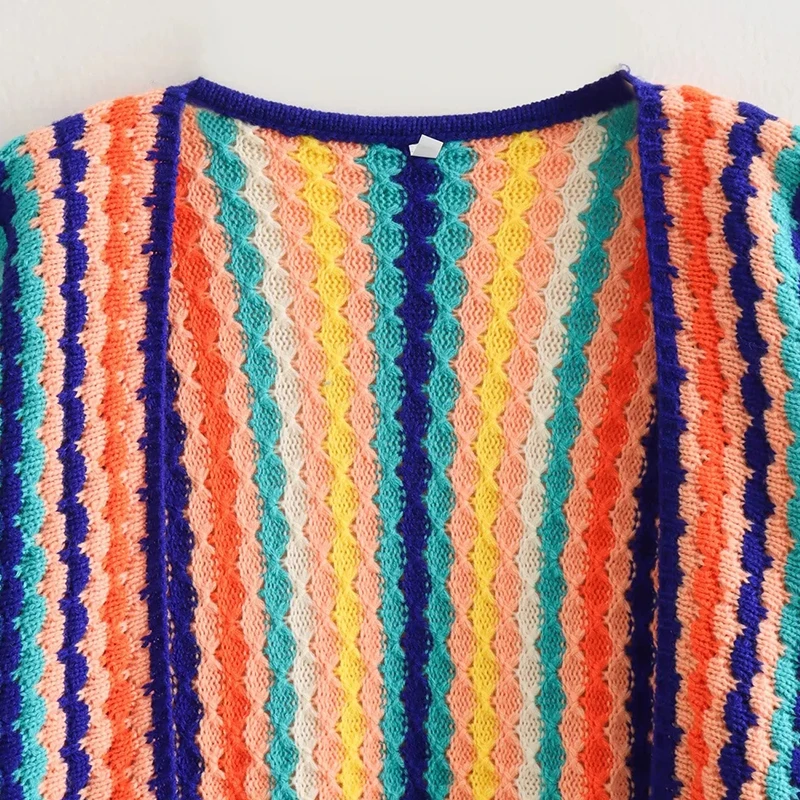Understanding Cashmere Pilling: Why It Happens and What It Means
Cashmere pilling refers to those small fuzzy balls that form on the surface of your beloved garments. These tiny fiber tangles, often appearing in areas of frequent friction, are a natural characteristic of cashmere rather than a flaw. Understanding why pilling happens can help you appreciate your luxury pieces even as you work to maintain them.
At the microscopic level, pilling occurs when shorter fibers in the cashmere fabric work their way to the surface due to regular friction. Unlike longer-staple fibers that remain securely twisted in the yarn, these shorter fibers break free and then twist around themselves, forming the small balls we recognize as pills. This process is particularly common with cashmere because of its natural fiber characteristics.
What is pilling? Pilling refers to the small, fuzzy balls that form on fabric surfaces when loose fibers break, tangle, and mat together due to friction. These small nodules can affect appearance but aren’t necessarily a sign of poor quality.
Even the highest quality cashmere will experience some degree of pilling. Estate Cloth uses only Grade A cashmere with fibers under 16 microns in thickness and exceeding 36mm in length – yet these premium fibers, while luxuriously soft, still contain some shorter strands that may eventually pill. The extraordinary softness of cashmere comes partly from these same characteristics that make it susceptible to pilling.
What many cashmere owners don’t realize is that initial pilling is often most noticeable when you first begin wearing your garment. This happens because the manufacturing process leaves some loose, shorter fibers that will naturally work their way out with early wear. With proper care, this initial pilling typically diminishes over time as these excess fibers are removed, and proper care techniques for luxury cashmere can significantly extend the beautiful life of your garments.
Essential Prevention Strategies: Daily Habits That Protect Your Cashmere
How you wear and handle your cashmere day-to-day has a profound impact on how quickly pilling develops. Simple adjustments to your daily habits can dramatically extend the pristine appearance of your favorite pieces.
Mindful Wearing Practices
- Allow your cashmere to rest between wears (ideally 24-48 hours) so the fibers can recover their natural resilience
- Rotate between multiple cashmere pieces rather than wearing the same item repeatedly
- Remove your cashmere before activities involving vigorous movement or sustained friction
- Consider the impact of accessories – crossbody bags, backpacks, and shoulder bags create constant rubbing in one area
Thoughtful layering with cashmere cardigans makes a significant difference in preventing pilling. Choose smooth fabrics like silk or fine cotton for layers that touch your cashmere directly. Rough materials like denim or tweed should be separated from cashmere by a smoother fabric barrier whenever possible.
Friction Awareness
- Identify your personal “high-risk” activities – desk work where your sleeves rub against surfaces, driving where your back and elbows create friction, or kitchen work where your front may brush against counters
- Be mindful of repetitive movements – constant arm motion can create significant friction in underarm areas
- Pay special attention to vulnerability points like elbows, underarms, cuffs, and sides where your arms naturally rest
- Consider protective measures for commuting, such as a smooth-lined coat over cashmere during crowded transit
Preventative Maintenance
- Brush new cashmere items gently with a cashmere brush before first wear to remove loose surface fibers
- Continue light brushing after each wear, using gentle downward strokes in a single direction
- Address small pills immediately rather than waiting until they become more noticeable
- Schedule the first gentle washing after 2-3 wears of a new cashmere item to help set the fibers
These preventative approaches require minimal time but deliver significant benefits for the high-quality cashmere sweaters in your collection. The investment of a few extra moments of care during daily wear will be repaid through extended garment beauty and longevity.
Optimal Washing Techniques for Cashmere Longevity
Proper washing is perhaps the most crucial element in preventing excessive pilling while maintaining your cashmere’s luxurious feel. Many owners mistakenly avoid washing cashmere for fear of damaging it, but appropriate cleaning actually helps fibers settle properly and reduces pill formation.
Washing Frequency Guidance
- Wash cashmere every 3-5 wears (not after every single use)
- Look for these signs that washing is needed: slight odor, visible soiling, or areas beginning to look fuzzy
- Regular gentle washing helps fibers realign and remove loose fibers before they can form pills
- Always wash before storing for extended periods
Hand Washing Method (Recommended Approach)
- Fill a clean basin with cold or lukewarm water (never hot – maximum 86°F/30°C)
- Add a small amount of pH-neutral or cashmere-specific detergent (roughly 1 teaspoon per sink of water)
- Turn garment inside out to protect the visible surface
- Fully submerge the garment and gently press down – avoid agitation or rubbing
- Soak for 10-15 minutes, occasionally pressing gently with flat hands
- Drain soapy water and refill basin with clean cool water of the same temperature
- Rinse by gently pressing water through the garment (repeat until water runs clear)
- Never wring or twist – instead press water out with flat hands
Understanding proper washing temperatures and techniques prevents not just pilling but also shrinkage and stretching that can compromise your cashmere’s appearance.
Machine Washing Alternative
While hand washing is ideal, machine washing can be acceptable with these precautions:
- Always use a protective mesh laundry bag
- Turn garments inside out before placing in the bag
- Select only “Delicate” or “Wool” cycle with cold water
- Use the shortest possible cycle with minimal agitation
- Avoid high-speed spin cycles – select the lowest spin option
- Use only detergents specifically formulated for wool/cashmere
| Suitable Detergents | Unsuitable Products |
|---|---|
| pH-neutral wool wash | Regular laundry detergent |
| Cashmere-specific shampoo | Fabric softeners |
| Baby shampoo (unscented) | Bleach (even color-safe) |
| Mild hair shampoo | Heavy enzymatic cleaners |
The gentleness of your washing approach directly impacts how your cashmere fibers behave over time. Harsh detergents or aggressive washing techniques rough up the fiber surface, creating more opportunities for pills to form.

Proper Drying and Reshaping Methods
How you dry your cashmere after washing significantly affects both pilling tendency and garment longevity. The gentle care you’ve taken during washing must continue through the drying process to preserve your garment’s integrity.
Initial Water Removal Techniques
- Never wring, twist, or squeeze cashmere forcefully – this damages the delicate fibers
- Lay the wet garment on a clean, dry white towel
- Gently roll the towel with the garment inside, pressing lightly to transfer moisture
- Unroll and repeat with a fresh towel if the garment remains very wet
- Watch for signs of excessive manipulation: stretching, distortion, or fibers pulling loose
Flat Drying Process
- Choose a flat, moisture-resistant surface away from direct heat and sunlight
- Cover the surface with a clean white towel to protect both the surface and garment
- Lay the damp garment flat, gently reshaping to original dimensions
- Pay special attention to sleeves, collars, and hems when reshaping
- Ensure good air circulation around the drying area
- Expect drying to take 24-48 hours depending on humidity and garment thickness
- Flip halfway through drying time to ensure even moisture evaporation
The reshaping process is particularly important for cashmere cardigans with their more structured design elements like button bands and collars.
Common Drying Mistakes to Avoid
- Never use direct heat sources (radiators, hair dryers, or sunlight)
- Avoid hanging wet cashmere as gravity will stretch the fibers permanently
- Don’t rush the drying process – patience preserves your garment’s shape
- Never store or wear cashmere before it’s completely dry
- Avoid drying on wooden surfaces that may transfer color or on plastic that prevents air circulation
Proper drying not only prevents misshaping but also allows fibers to settle back into their natural alignment, which helps minimize pilling in high-friction areas once the garment is worn again.
Strategic Storage Solutions to Minimize Pilling
How you store your cashmere between wearings and especially during off-seasons has a direct impact on pilling prevention. Proper storage techniques protect the fibers from unnecessary stress and environmental factors that contribute to premature wear.
Folding Techniques
Cashmere should always be folded rather than hung to prevent the weight of the garment from stretching the fibers. This stretching weakens the fabric structure and makes it more vulnerable to pilling when worn.
- Begin with a clean, flat surface
- Fold sleeves backward behind the body of the garment
- For sweaters: fold in thirds lengthwise, then in half or thirds crosswise
- For cardigans: button up completely before folding to maintain shape
- Avoid sharp creases that stress fibers along fold lines
- Rotate folded items periodically to avoid permanent crease lines
Implementing comprehensive proper cashmere storage methods helps maintain the structural integrity that resists pilling.
Optimal Storage Environment
- Choose cool, dry locations away from direct sunlight
- Ensure adequate air circulation – avoid tightly packed drawers
- Maintain moderate humidity (40-50% ideal) to prevent fiber drying
- Keep storage areas clean and dust-free
- Store seasonally unused pieces in a separate location from regular rotation items
- Check stored items monthly for any signs of issues
Storage Materials and Tools
- Use breathable cotton storage bags rather than airtight plastic containers
- Place acid-free tissue paper between folds for long-term storage
- Incorporate cedar blocks or lavender sachets as natural moth deterrents (replace/refresh every 3 months)
- Consider using dedicated cashmere drawer dividers to prevent items from shifting
- Avoid storing heavy items on top of folded cashmere
Well-planned storage practices maintain the fiber integrity of your cashmere between wears, which directly translates to reduced pilling when the garment returns to active use.
Expert Pill Removal: Tools and Techniques
Despite your best preventative efforts, some degree of pilling is inevitable with cashmere. Having the right tools and techniques for removal keeps your garments looking their best without damaging the delicate fibers.
Tool Comparison and Selection
| Tool Type | Best For | Cautions | Effectiveness |
|---|---|---|---|
| Cashmere Comb | Routine maintenance, fine cashmere | Requires gentle technique | High (when used correctly) |
| Fabric Shaver | Moderate to heavy pilling | Test on inconspicuous area first | Very high (but higher risk) |
| Sweater Stone | Medium-weight cashmere | Can be abrasive if pressed too hard | Medium to high |
| Fine-tooth Comb | Emergency touch-ups | Easy to catch and damage fibers | Low to medium |
Understanding the differences between professional pill removal tools helps you select the right option for your specific needs and comfort level.
Professional-Grade Removal Techniques
Preparation:
* Lay garment flat on a clean, solid surface
* Ensure good lighting to see all pills clearly
* Smooth out the fabric completely to eliminate wrinkles
* Work on completely dry garments onlyUsing a Cashmere Comb:
* Hold fabric taut with one hand
* Comb in one direction only using short, gentle strokes
* Work systematically across the garment from top to bottom
* Clean the comb frequently to prevent fiber buildupUsing a Fabric Shaver:
* Hold fabric flat and slightly taut
* Hover the device just above (not pressed into) the fabric
* Use short, light passes rather than continuous motion
* Empty the collection chamber frequently
* Work in good lighting to avoid missing spotsUsing a Sweater Stone:
* Hold fabric slightly taut
* Apply gentle downward pressure only
* Brush pills and fiber debris away frequently
* Work in small sections (4” x 4”)
Tool Maintenance
- Clean combs after each use by removing trapped fibers
- Empty fabric shaver collection chambers before they fill completely
- Rinse sweater stones occasionally to remove fiber residue
- Store tools in protective cases to prevent damage
- Replace tools when they show signs of wear (bent tines, dull blades)
The right technique protects your men’s cashmere cardigans while effectively addressing pilling, striking the perfect balance between maintenance and preservation.

Targeted Solutions for Different Pilling Scenarios
Different areas of your cashmere garments experience different types of wear, requiring specialized approaches to pill management. Adapting your techniques to these specific scenarios ensures effective treatment without damaging the fabric.
Addressing Heavy Pilling Areas
Underarms, cuffs, and sides typically experience the most friction and consequently develop the most noticeable pilling. These areas require special attention:
- Work in small sections when removing pills from dense clusters
- Use multiple light passes rather than one aggressive treatment
- Allow the area to rest between passes to see progress
- Consider a fabric shaver followed by a cashmere comb for severe cases
- Address these high-friction zones more frequently rather than waiting for significant pilling
Implementing specific strategies to stop cashmere pilling in these challenging areas helps maintain your garment’s appearance over time.
Handling Delicate or Embellished Cashmere
Special cashmere pieces require modified approaches:
- For ultra-fine cashmere (below 14 microns), use only cashmere combs with wide-spaced tines
- Work around embellishments by using smaller tools or fingertips to gently remove pills
- Cover buttons, sequins, or embroidery with cardboard or thick paper while treating nearby areas
- Consider using tweezers for precise pill removal near delicate details
- Test any approach on an inconspicuous area first
Seasonal Refreshing Process
- End-of-season treatment: thorough pill removal before cleaning and storage
- Beginning-of-season revival: light combing after removing from storage
- Mid-season maintenance: address high-friction areas every 3-5 wears
- Create a rotation schedule to distribute wear across multiple items
A consistent, targeted approach to pill management extends the life of your investment pieces while maintaining their luxurious appearance and feel.
Cashmere Blends: Special Care Considerations
Cashmere blended with other fibers requires modified care approaches as these materials behave differently than pure cashmere. Understanding your specific blend helps you adapt your maintenance routine appropriately.
Common Blend Compositions and Their Properties
Cashmere-Silk Blends: Pill less than pure cashmere but develop a different type of surface change (slight sheen loss). These blends require exceptionally gentle washing and minimal agitation.
Cashmere-Wool Blends: More resilient against pilling than pure cashmere but may feel slightly less soft. The cashmere-wool cardigans typically benefit from slightly firmer brushing techniques.
Cashmere with Synthetics: Often added for durability or price reduction. These blends may pill differently – sometimes creating more persistent pills that are firmly attached to the fabric surface.
Adjusted Care Techniques
- Cashmere-silk requires cooler washing temperatures (below 86°F/30°C)
- Wool blends can tolerate slightly more agitation during pill removal
- Synthetic blends often benefit from fabric shavers rather than combs
- All blends should be dried flat but with attention to their specific draping qualities
Identifying Your Blend Type
- Read fabric content labels for exact percentages
- Feel the fabric: silk blends have distinctive drape and subtle sheen
- Observe pill formation: synthetic blends tend to form more uniform, rounded pills
- Note recovery after stretching: wool blends spring back more quickly than pure cashmere
Adjusting your care approach based on your specific blend composition helps maintain the unique properties that make each blend special.

Creating a Comprehensive Cashmere Care Routine
Developing a systematic care routine prevents pilling problems from becoming significant while extending the life of your cashmere investments. A thoughtful maintenance schedule integrates all the prevention and treatment methods into manageable habits.
Daily and Weekly Habits
- After each wear: Light brushing with a cashmere brush in a single direction
- Weekly inspection: Check high-friction areas for early pill formation
- Weekly rotation: Move items in your drawer to distribute wear and storage pressure
- Immediate spot treatment: Address any food drops or spills promptly
Monthly Maintenance
- Full garment pill check: Inspect under good lighting, addressing any pills
- Storage assessment: Refold items to avoid permanent crease lines
- Seasonal transition planning: Begin preparing less-used items for storage
- Washing schedule: Ensure each regular-rotation item is washed every 6-8 weeks
The women’s cashmere cardigans in your collection deserve this regular attention to maintain their beauty through countless wearings.
Seasonal Care Cycle
- End-of-Season (Spring):
- Complete washing of all winter cashmere
- Thorough pill removal and inspection
- Repair of any small issues before storage
Proper folding with tissue paper and moth deterrents
Beginning-of-Season (Fall):
- Air items for 24 hours before wear
- Light refreshing brush to remove any storage dust
- Inspection for any pest damage or issues
- Reintroduction to rotation schedule
Creating a maintenance calendar with these elements helps transform cashmere care from an occasional chore to simple routine habits that preserve your investment.
Cashmere Wrap Sweaters, Women's Cashmere Pullovers
$75.89 Select options This product has multiple variants. The options may be chosen on the product pageCashmere Cable Knit Sweaters, Women's Cashmere Pullovers
Price range: $111.82 through $112.93 Select options This product has multiple variants. The options may be chosen on the product pageCropped Cashmere Sweaters, Women's Cashmere Pullovers
$155.77 Select options This product has multiple variants. The options may be chosen on the product page- Price range: $102.02 through $109.37 Select options This product has multiple variants. The options may be chosen on the product page
Oversized Cashmere Sweaters, Plus Size Cashmere Sweaters, Women's V-Neck Cashmere Sweaters
$136.87 Select options This product has multiple variants. The options may be chosen on the product pageStriped Cashmere Sweaters, Women's Cashmere Pullovers
$139.68 Select options This product has multiple variants. The options may be chosen on the product page
When to Seek Professional Help
While home care is sufficient for most cashmere maintenance, certain situations warrant professional intervention. Recognizing these scenarios helps preserve particularly valuable pieces and address issues beyond typical pilling.
Signs Professional Intervention Is Needed
- Pills that resist multiple careful removal attempts
- Structural damage appearing alongside pilling (holes, runs, or significant thinning)
- Valuable heirloom or investment pieces showing concerning wear
- Staining that accompanies pilled areas
- Significant change in fabric texture or drape
Finding Qualified Cashmere Specialists
- Look for professionals specializing specifically in knitwear or cashmere
- Ask about their approach to pill removal (should be hand method, not machine)
- Request information about their cleaning methods for cashmere
- Check reviews specifically mentioning cashmere or wool care results
- Ask if they offer repair services alongside cleaning
Cost-Benefit Analysis
- Professional cashmere cleaning typically costs $20-50 per item
- Full restoration (cleaning, pill removal, minor repairs) ranges from $50-100
- Compare this cost to the replacement value of your garment
- Consider sentimental value alongside monetary value
- Weigh the expected extension of garment life against service costs
After professional treatment, you might explore new styling approaches for your cashmere cardigans to showcase the restored beauty of your treasured pieces.
Is Pilling Always Bad? Understanding Quality Despite Pilling
Many cashmere owners mistakenly believe that pilling automatically indicates poor quality. In reality, even the finest cashmere will develop some pilling, especially during initial wears. Understanding this helps you evaluate your garments accurately.
Quality Indicators Beyond Pilling
Premium cashmere from Estate Cloth undergoes rigorous 12-point quality control, including specific testing for pilling resistance. However, the very characteristics that create cashmere’s legendary softness – fine fiber diameter under 16 microns and adequate length exceeding 36mm – also mean some natural pilling will occur.
True quality indicators include:
* Softness recovery after washing
* Consistent warmth without excessive weight
* Color retention through proper washing
* Resilience when gently stretched
Evaluation Framework
To determine if pilling indicates a quality concern:
* Normal pilling appears primarily in friction areas and diminishes after initial wears
* Problematic pilling appears across all surfaces equally and continues unabated
* Quality cashmere pills may feel softer and detach more easily when addressed
* Poor quality cashmere creates pills that seem firmly attached to the fabric
The Lifecycle Perspective
Understanding the typical lifecycle of quality cashmere helps set appropriate expectations:
* New cashmere often experiences more noticeable initial pilling as manufacturing fibers work loose
* With proper care, pilling typically decreases after the first few wear and wash cycles
* Mid-life cashmere develops pills more slowly and primarily in high-friction zones
* Well-maintained premium cashmere can remain beautiful for decades with appropriate care
While some degree of pilling is inevitable, the superior comfort and lasting quality make cashmere cardigans worth the investment when you select well-made pieces and maintain them properly. With the care techniques outlined in this guide, you can enjoy your luxury cashmere items for years to come, managing any pilling effectively while preserving their exceptional comfort and elegance.







